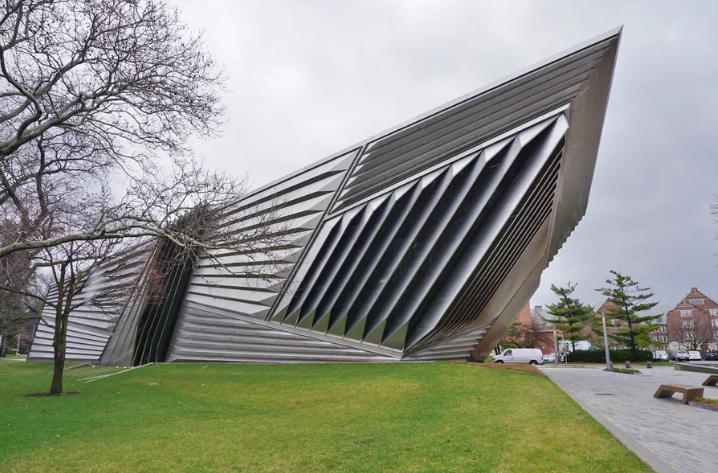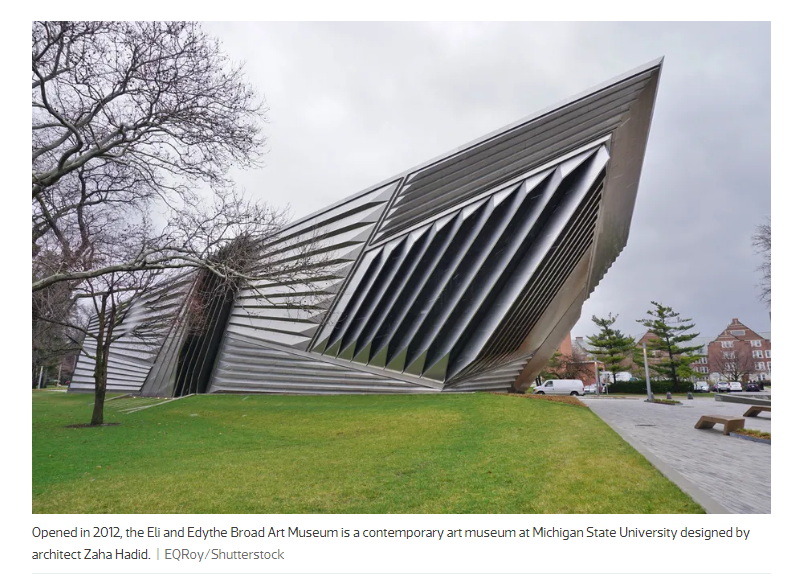Beyond the Canvas: Museums Where the Architecture is Art

Museums are treasure troves of history, art, and culture, but some stand out not just for their collections, but also for their exceptional architecture. These buildings themselves become works of art, seamlessly blending form and function to create captivating spaces that enhance the visitor experience.
By Joseph Wright

One such example is the Eli and Edythe Broad Art Museum at Michigan State University. Designed by the renowned architect Zaha Hadid, this museum is a testament to contemporary architecture. Its dynamic, fluid form, reminiscent of a swirling cloud, defies conventional museum design. The building's sweeping curves and dramatic angles create a sense of movement and energy, inviting visitors to explore its interior labyrinth.
Inside, the museum's open plan allows for a flexible exhibition space, showcasing contemporary art in a dynamic and engaging way. The use of natural light, filtered through large, irregular windows, illuminates the artwork, while the building's overall structure provides a stunning backdrop for the collections.
This fusion of art and architecture is not unique to the Broad Museum. Here are a few other museums around the world known for their outstanding architectural design:
1. The Guggenheim Museum, New York: Designed by Frank Lloyd Wright, this iconic museum features a spiraling ramp that leads visitors through a continuous journey of art. The museum's unique design, characterized by its white, cylindrical structure, has become a symbol of modern architecture.
2. The Kunsthaus Graz, Austria: Also known as the "Friendly Alien," this museum by architects Peter Cook and Colin Fournier is a unique example of parametric architecture. Its playful, futuristic design features over 1,000 acrylic panels that change color in response to light and weather.
3. The Museum of Islamic Art, Doha, Qatar: Designed by I.M. Pei, this museum is a stunning example of contemporary Islamic architecture. Its white, geometric structure, inspired by traditional Islamic patterns, is beautifully situated on the waterfront, offering breathtaking views of the city.
4. The Vitra Design Museum, Weil am Rhein, Germany: This museum, designed by Frank Gehry, features a playful, deconstructed aesthetic. Its dynamic forms and unconventional materials, such as titanium and corrugated steel, create a sense of movement and excitement.
These are just a few examples of museums where the architecture itself becomes an integral part of the artistic experience. Visiting these buildings allows visitors to appreciate art not just through the contents within, but also through the design of the space itself. These museums are testaments to the power of architecture to inspire, challenge, and delight, offering a unique and unforgettable journey for art enthusiasts and architecture lovers alike.